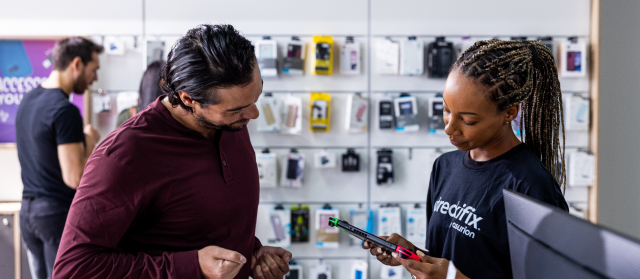You plug in your USB device—no sound, no pop-up, nothing. Whether you're using a flash drive, keyboard, or mouse, it's a common issue that can interrupt what you're trying to do. The good news? There are a few quick fixes that can usually get things working again.
At Asurion, we're the tech experts you can trust—each year, more than 30 million people rely on us to keep their tech running as it should. We have the know-how to tackle everything from phones and computers to the latest smart home gadgets. If your USB ports aren’t responding, here are some simple ways to get things working again.
Try a different USB port
Start simple: unplug your USB device and try a different port. Most laptops and desktops have multiple USB ports, so you’ve got options. If you’re using a desktop, test both the front and back ports. If the device works in one port but not the other, the original port might be faulty.
Restart your computer
Sometimes all your computer needs is a quick reset. Unplug your USB device, restart your PC, and then plug the device back in after it boots up. This simple step often helps Windows recognize the connection again.
Check Device Manager
You can use Device Manager to detect driver issues.
- Right-click the Start button and choose Device Manager.
- Expand Universal Serial Bus controllers.
- Look for any items marked with a yellow warning symbol.
- Right-click the device and select Update driver or Uninstall device, then restart your computer
Update Windows
Missing system updates can prevent your computer from recognizing devices.
- Go to Settings > Windows Update.
- Click Check for updates.
- Install any available updates and restart your PC.
Disable USB selective suspend
This power-saving feature can sometimes disable ports unintentionally.
- Go to Control Panel > Power Options.
- Click Change plan settings next to your active plan.
- Select Change advanced power settings.
- Expand USB settings > USB selective suspend setting.
- Set it to Disabled.
Check for physical damage
If you're still not getting a connection, take a closer look at the USB cable or device to see if there's any visible damage. Try plugging it into a different computer—if it works there, the problem might be with your USB port, not the device itself. If you suspect physical damage, bring your device to your nearest uBreakiFix® by Asurion store, where our experts can perform a no-cost diagnostic to determine the issue.
FAQ
Why won’t my USB device show up in Windows?
It could be a faulty port, outdated drivers, power settings, or a physical issue. Try a different port and check Device Manager for errors.
How do I reset USB ports in Windows?
Restart your computer. You can also uninstall USB controllers in Device Manager, then reboot to reinstall them automatically.
What is USB selective suspend?
It’s a Windows feature that disables inactive USB ports to save power. It can sometimes cause issues and is safe to disable.
Will updating Windows fix USB problems?
It might. Software updates often include new drivers or bug fixes that can resolve connectivity issues.
What if none of these steps work?
If your USB ports still don’t respond, it may be a hardware issue. Our experts can help—check out our computer repair services for support.



